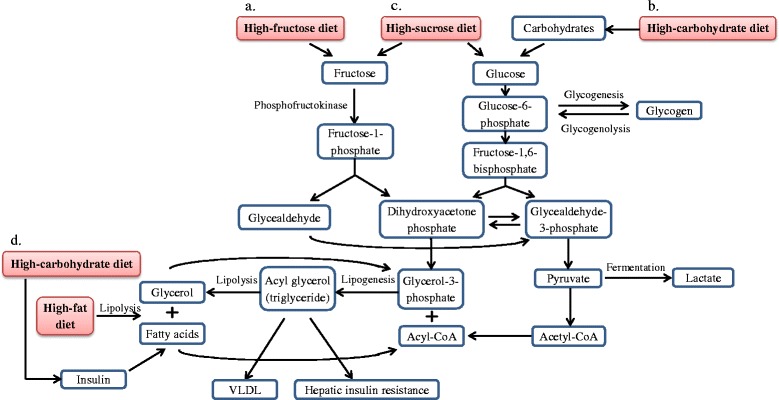Fig. 1.

Summary of the effects of different diets on whole body metabolism. a High-fructose diet intake interferes glycolytic pathway by bypassing the rate-controlling step, the conversion of glucose-6-phosphate into fructose-1,6-bisphosphate. Phosphofructokinase acts as a negative regulator for glucose metabolism and allows fructose to enter the glycolytic pathway continuously to produce pyruvate, lactate, glycerol and acyl-glycerol. b When plenty of glucose is available during high dietary carbohydrate, glucose utilizing pathways are initiated: breakdown of glucose by glycolysis, conversion of glucose into glycogen via glycogenesis, and production of insulin which acts on adipose tissue to promote fatty acids synthesis. c Consumption of high-sucrose diet: sucrose separates into fructose and glucose molecules and enters their specific mechanisms as stated earlier. d Fats undergo lipolysis, glycerol and fatty acids are released into the blood. However, fatty acids released during lipolysis are re-esterified to form triglyceride. Overproduction of triglyceride through excessive intake of various nutrients is likely to cause accumulation of triglyceride in the liver, which will further lead to hepatic insulin resistance (reduced insulin sensitivity)
